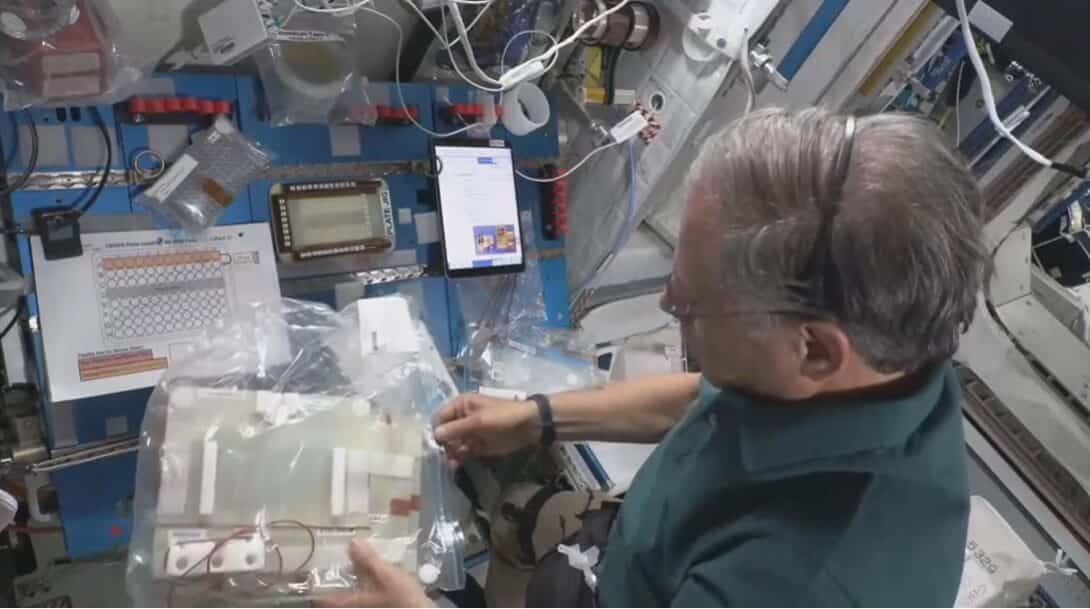Today, Tuesday 19/4/2022 at four o'clock in the afternoon Israel time, Eitan Stiva and his three companions will enter the private space mission AX-1. Update: The landing was delayed for about 12 hours
Update: Due to the weather conditions near the coast of Florida, the landing of the AX-1 team members was delayed for about 12 hours. Instead of five in the evening today it will be tomorrow at five in the morning Israel time

This is what astronaut Eitan Stiva looked like during the CRISPR experiment by the researchers Dr. Dodo Borstein from the Shemonis School at Tel Aviv University and Dr. Gore Pines from the Volcanic Institute. In this experiment, various components of diagnostic technology are tested in microgravity conditions on the International Space Station. The success of the experiment will contribute to the fact that researchers will be able to use the CRISPR systems for accurate diagnostics of bacteria and viruses that may attack crew members in space missions and in the future even diagnose diseases in space agriculture.
Brain activity in microgravity conditions
Attached is the documentation of astronaut Eitan Stiva during the experiment of measuring brain activity in microgravity using an advanced EEG system (used to record the electrical activity in the brain). As part of the experiment, cognitive indicators were monitored from the astronaut Eitan Stiva using an innovative EEG system from the brain.space company that allows for automatic adjustment and measurement of high-resolution brain activity. In light of the planning for long-duration space missions, monitoring the well-being of astronauts over long periods becomes necessary. In particular, there is a critical need to monitor the brain activity and cognitive function of those staying in microgravity conditions over time. The purpose of the experiment, which was carried out in collaboration with the brain.space company and the laboratory of Dr. Oren Shariki from Ben Gurion University, is to monitor the brain activity of astronaut Eitan Stiva and other astronauts on Earth before, after and during their stay on the space station in a resting state and while performing various cognitive operations in order to measure the The effect of microgravity on brain and cognitive function.
Photography of lightning sprites and atmospheric electrical phenomena
Stiva made several photographs for the Spaceborne Observations of Lightning Elves and Other Atmospheric Electrical Phenomena (ILAN-ES) experiment. As part of the experiment, Eitan Stiva photographed lightning storms over New Caledonia, near Australia, then over Rwanda and finally over Papua, New Guinea. The experiment is led by Prof. Yoav Yair, Dean of the School of Sustainability at Reichman University. The experiment involving ground stations around the world Thousands of lightning storms occur at any given moment across the globe, at an average rate of about 50 lightning strikes per second. The ILAN-ES experiment deals with observations from the space station on lightning storms and optical phenomena in the upper atmosphere, associated with extremely strong lightning. These phenomena are called lightning sprites, they occur between the altitudes of 50 and 90 km and are photographed by Eitan Stiva from the International Space Station.
